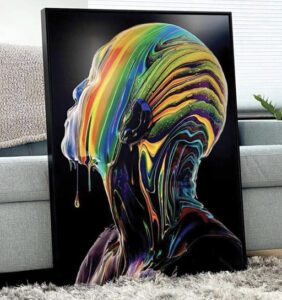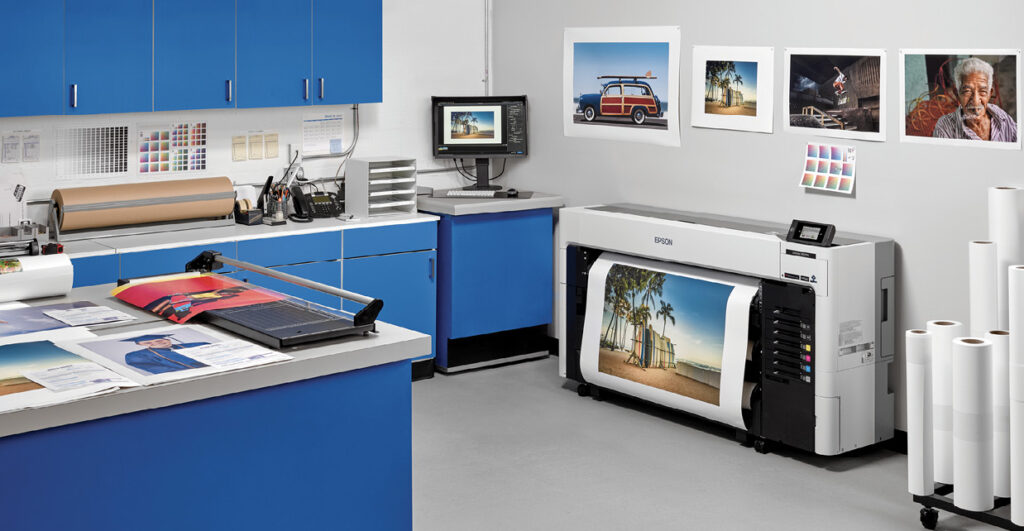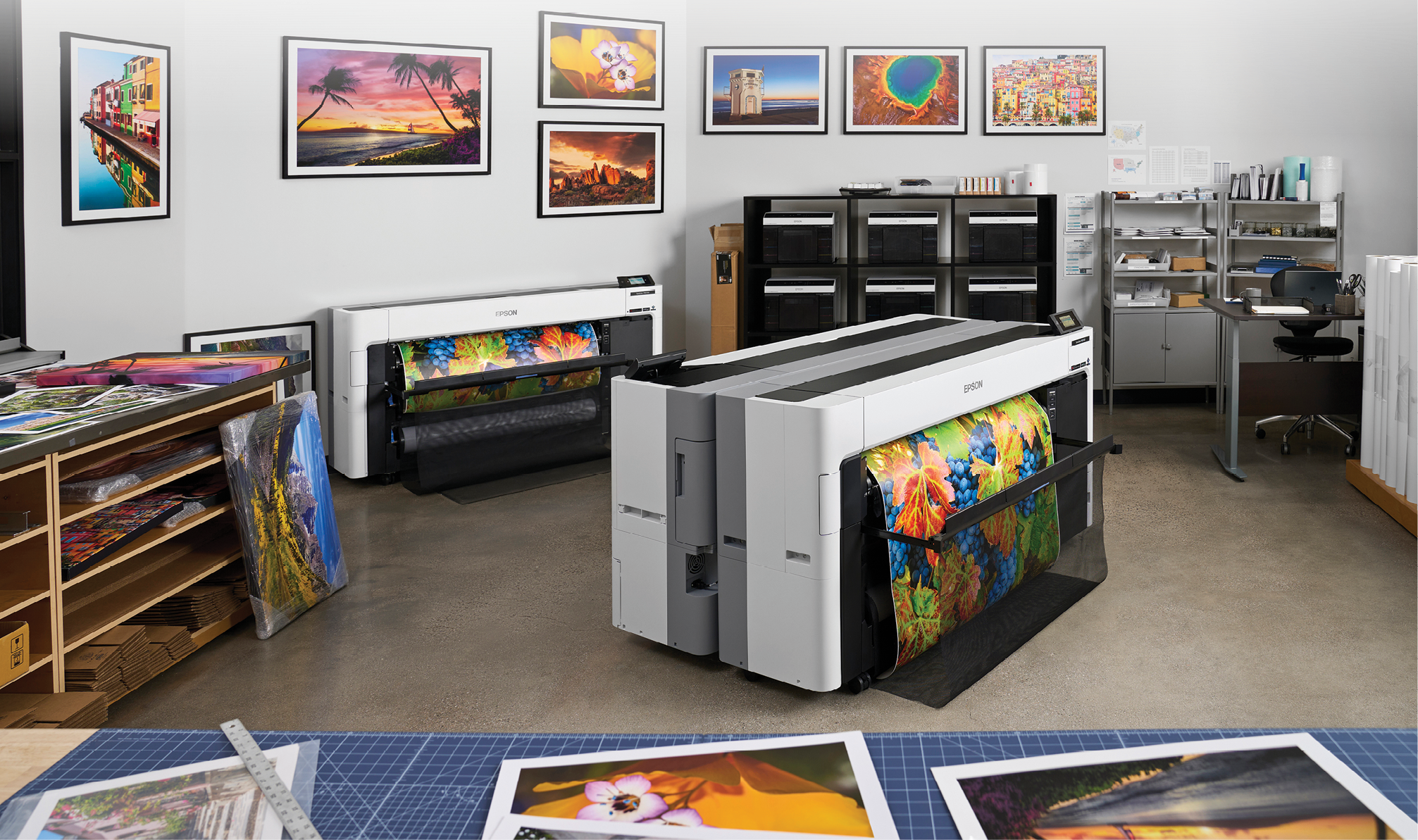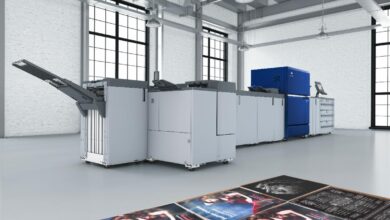Sign shops and photography businesses getting into the fine art market will want to pick the right papers, ink, and printers to get the best, high-quality images that not only have great colors but will last decades.
“Both industries are shrinking,” said Sonny Chang, vice-president of sales and marketing for Buffalo Imaging, a distributor of printing equipment and supplies based in Commerce, California. “A lot of our photography customers are doing sign products, and a lot of sign companies are getting into high-end commercial and fine art photography.”
Fine art
Printing fine art photos for customers is a big and profitable market that requires high-quality materials but also in-person and not online sales to understand the desired level of quality and eventual placement of the art, Chang said. There’s also giclee, or low-end, high-volume printing for fine art images but without the same level of quality or need for that customer contact, he said.
Fine art printing involves two primary materials — 100% cotton canvases and photo papers. Canvases also can be polyester but aren’t as commonly used for fine art applications.
“There are so many variations of fine art and photo papers — different finishes, weights, textures, and sizes,” said Jeanene Fitzgerald, sales representative of American Print Consultants, a distributor of wide-format printers and supplies and textile decorations based in Chambersburg, Pennsylvania. “Fine art paper is branching away from the traditional, paper-based type products that work on water-based printers to include media that will work on solvent, latex, and UV printers.”

The weight of fine art and photo papers will depend on the application and what type of printer and ink is being used, but the paper will be thicker than traditional or standard paper, Fitzgerald said.
“The fine art material gives you a better, richer look than the standard because the base is different. The standard is more like a plastic base,” Chang said. “[Customers] are looking for more natural products, so that it looks like a painting or has a more traditional look.”
The base for cotton canvases typically consists of natural fibers and textiles with a specialized clay coating able to receive high-quality inks. The fine art papers are made of cotton rags or premium cellulose fibers, making them thicker than standard papers. Photo paper usually has one side with a high-gloss sheen and the other with a matte finish, and the coating is microporous with the base composed of wood pulp fibers. The coatings for both canvases and photo papers can be smooth, textured, or high gloss, allowing for a high-quality appearance and feel.
“What the special coating does is it makes the image look more natural and have a fine art look,” Chang explained. “The colors are richer and the imagery is supposed to last longer, like 100 years or more.”
Canvas & photo paper

When printing on canvas and paper, Fitzgerald advises selecting the right type of printer.
“With fine art papers, you need to check with the manufacturer which devices the papers are compatible with. If they are uncoated papers, generally these will work with aqueous, UV, and resin printers,” Fitzerald said, adding that the color and image results will depend on the printer, file, and color profile. “But, generally, there are great printers out there that can print fine art in addition to applications.”
The preferred ink for canvases and photo paper is water-based, giving a better color saturation and color match than solvent ink. Printers using water-based ink can provide a wider range of the color spectrum from a six- to 12-color system, unlike solvent inks that are limited to four to eight color options. The thicker base of the canvas or paper also can absorb more ink, resulting in better color saturation and a richer, deeper look to the colors.
“Whether you write your own or job it out, good color profiles are also integral to ensuring high-quality results,” Fitzgerald said. “If you are printing fine art, you will get the best results with a color profile written for your printer and your media in your environment.”
Printing on canvas and photo paper should be done in a low-humidity and clean environment to prevent moisture and dust from getting onto the materials, which also should be handled with gloves to prevent scratching, Chang said.
“Fine art paper doesn’t mean it’s the strongest paper. It’s very delicate,” Chang cautioned. “Fake materials are easier to handle than the real things.”
Another recommendation is to avoid touching the canvas and photo paper and storing both the printed pieces and unused rolls and sheets in an office-type environment that’s at room temperature and low humidity.

“Make sure your printer is in good working condition,” Fitzgerald said. “Paying attention to your daily and weekly maintenance will ensure you know the condition of your printer.”
Another thing to consider for printing on canvas and photo paper is using high-resolution images, especially for large printing mediums, to achieve a crisp, professional-looking result. The preferred software formats for fine art printing are Adobe Photoshop and Adobe Illustrator, with the photo files JPEG for photos and TIFF for graphics.
“Be aware of the application, what the customer needs, and what colors they want to achieve and find the right paper for that, so you’re satisfying the customer and getting the best quality, instead of having to do a lot of redos,” Chang cautioned.
Printing sometimes doesn’t have to be done at a high resolution to still achieve that quality, Fitzgerald said.
“Test out your output at different resolutions and speeds, and you may find that your file on this media looks better with a lower resolution,” explained Fitzgerald.




